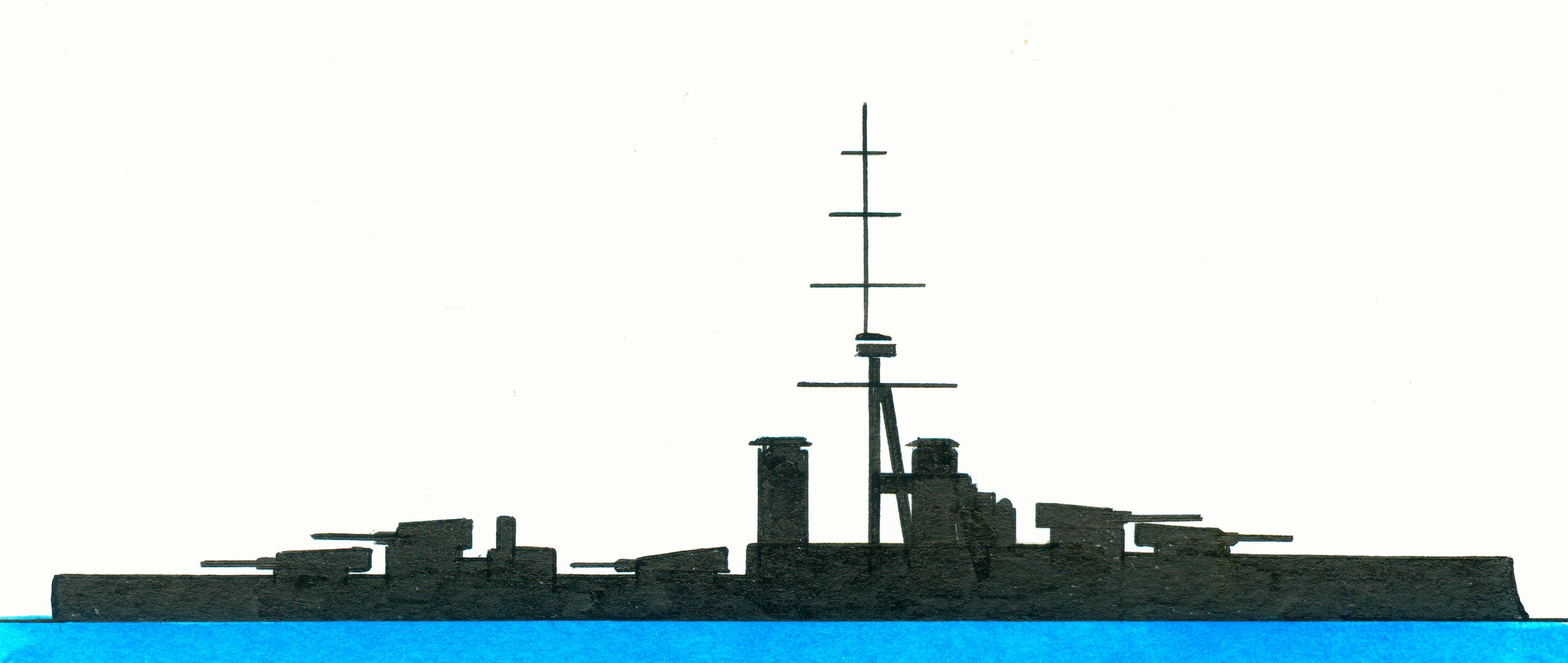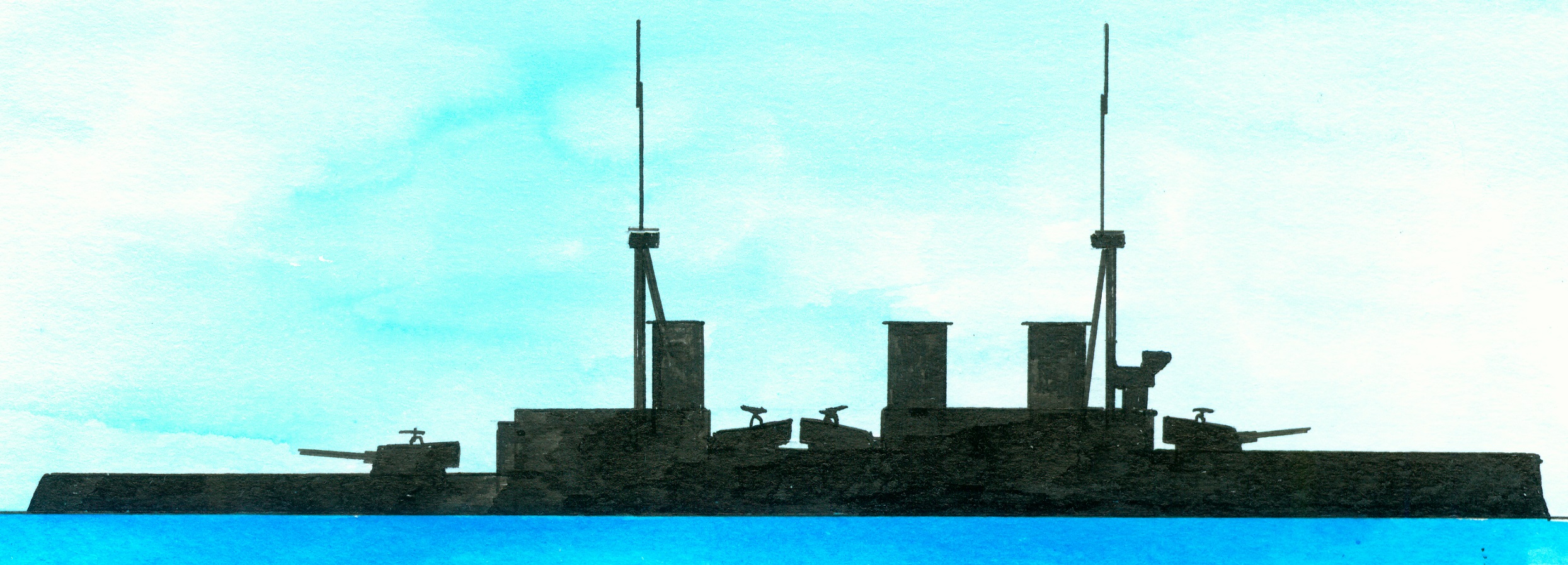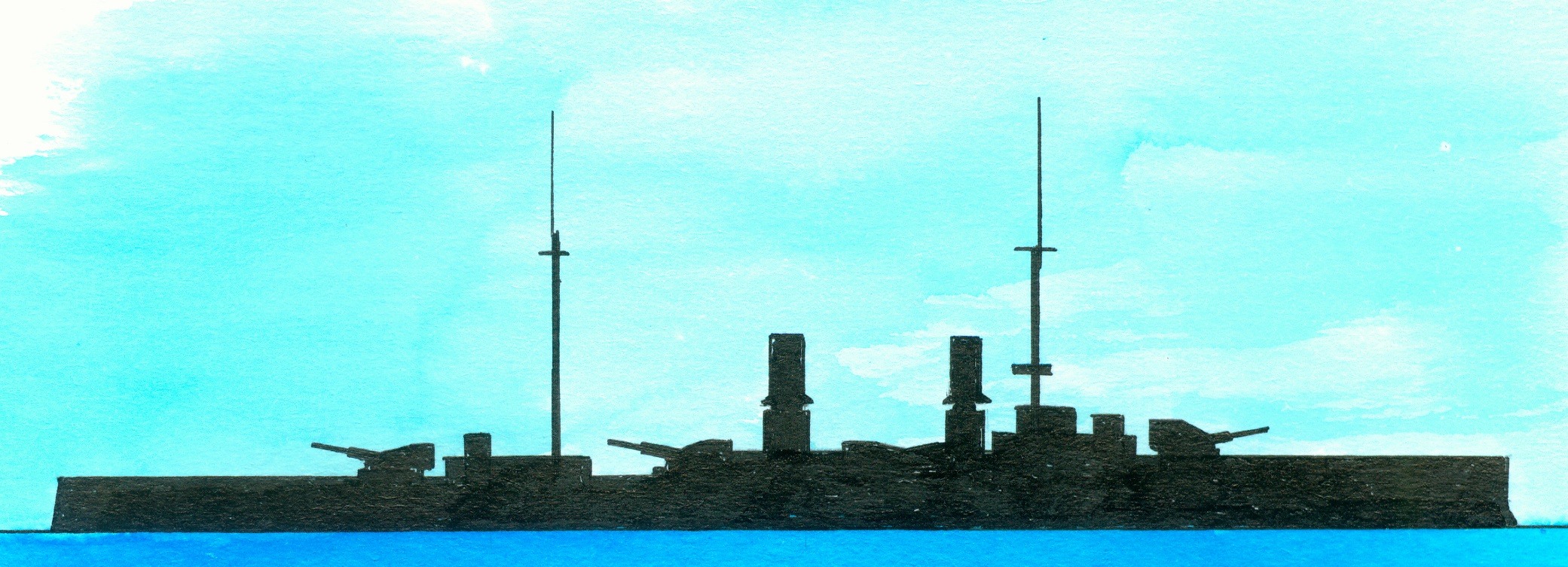British battle cruiser HMS Lion
German battle cruiser SMS Moltke
British Orion-class battleships
Turkish dreadnought Reşadiye which became the British HMS Erin
British Invincible-class battle cruisers
German armoured cruiser SMS Blücher
An item dated London, England 20th reported that as a result of the Washington Naval Treaty the British cabinet decided to break up six of her largest battleships namely the battle cruisers HMS Lion (1), Princes Royal (2) and the battleship Orion (3), Conqueror (4), Monarch (5) and Erin (6). Also the old battle cruiser the Indomitable (7) was to be broken up. She brought in 1908 the Prince of Wales towards Canada. In the First World War was she involved in the destruction of the German battle cruiser Blücher.(8) She departed the same day Sheerness, England towed by Dutch tugs and would cross the North Sea that night to be broken up in the Netherlands.
Notes
1. Launched at the Devonport Dockyard, Plymouth, England on 29 September 1909, launched on 6 Augustus 1910, completed in May 1912, commissioned on 4 June 1912, laid up in reserve in March 1920, as a result of the Washington Naval Treaty stricken, paid of on 30 March 1022 and sold to be broken up for 77.000 pound sterling on 31 January 1924. Of the Lion-class preceded by the Indefatigable-class and succeeded by the Queen Mary and consisting of the Lion and the, Princess Royal nicknamed Splendid Cats. This class was realized as a result of the German arms race and to be able to destroy the German Moltke-battle cruisers.
2. Laid down at the shipyard of Vickers, Barrow on Furness, England on 2 May 1910, launched on 24 April 1911, completed in November 1912, laid up in reserve in 1920, efforts to sale her to Chile in 1920 were without success, sold to be broken up as a result of the Washington Naval Treaty in December 1922 and arrived at her final destination on 13 August 1923. Building costs 2.89.178 (with guns)-2.092.214 (estimated with guns pound sterling. Of the Lion-class preceded by the Indefatigable-class and succeeded by the Queen Mary and consisting of the Lion and the Princess Royal nicknamed Splendid Cats. This class was realized as a result of the German arms race and to be able to destroy the German Moltke-battle cruisers.
3. Of the Orion-class. Laid down at the Portsmouth Dockyard on 29 November 1909, launched on 20 August 1910, sea trials begun in September 1911, commissioned on 2 January 1912, seagoing gunnery training ship stationed at Portland since June 1921, paid off on 12 April 1922, decided to dispose her as a result of the Washington Treaty, sold to shipbreakers firm Cox and Danks on 19 December 1922 and broken up at Upnor in February 1923.Of the Orion-class consisting of the Orion, Monarch, Conqueror and Thunderer preceded by the Colossus-class and succeeded by the King George V-class.
4. Building ordered under 1909 Naval Estimates. Laid down by William Beardmore and Company, Dalmuir, Scotland on 5 April 1910, launched on 1 May 1911, commissioned on1 December 1912, laid up after 1918, decommissioned in 1921 and sold to be broken up in 1922 under the Washington Naval Treaty terms. Building costs 1.891.164 pond sterling. Building costs 1.892.823 pond sterling and she caused the bankruptcy of the shipyard which built her. Of the Orion-class consisting of the Orion, Monarch, Conqueror and Thunderer preceded by the Colossus-class and succeeded by the King George V-class.
5. Building ordered under 1909 Naval Estimates. Laid down by Armstrong, Elswick, England with yard number 828 on 1 April 1910, launched on 30 March 1911, commissioned in February 1912, decommissioned in 1921, target ship since 14 June 1924, decommissioned and scrapped of valuable parts at Portsmouth and sunk on 21 January 1925 while used as target on a distance of around 50 miles south of the Isles of Scilly by bombers, destroyers and battleships of which the HMS Revenge sunk her finally. Building costs 1.888.736 pond sterling. Building costs 1.892.823 pond sterling and she caused the bankruptcy of the shipyard which built her. Of the Orion-class consisting of the Orion, Monarch, Conqueror and Thunderer preceded by the Colossus-class and succeeded by the King George V-class.
6. Building was ordered by the Ottoman government and to be named Reşadiye. Modified design based on the British King George V-class using features of HMS Iron Duke. When the First World War broke out seized by the British government as ordered by Winston Churchill at that moment First Lord of the Admiralty. Laid down on the Vickers shipyard, United Kingdom on 6 December 1911, launched on 3 September 1913, completed in August 1914, taken over by the British Royal Navy on 22 August 1914 (she was already completed paid for by the Ottoman government!), since October 1919 part of the naval reserve, drill ship at the Chatham Dockyard since December 1919, refitted at the Devonport Dockyard between July-August 1920, regarded the Washington Treaty she was to become a training ship, decided to dispose her in May 1922, sold to the ship breaking firm Cox and Danks on 19 December 1922 and broken up at Queensborough, United Kingdom in 1923.
7. Of the Invincible-class consisting of the Invincible, Indomitable and Inflexible. Laid down at the shipyard of Fairfield, Govan, Scotland on 1 March 1906, launched on 16 March 1907, commissioned on 25 June 1908, added to the Reserve Fleet in 1919, paid off in March 1920 and sold to be broken up on 1 December 1921. Building costs 1.752.337 (with guns)-1.761.080 (without guns) pound sterling. Of the Invincible-class consisting of the Invincible, Indomitable and Inflexible. Preceded by the Minotaur-class armoured cruisers and succeeded by the Indefatigable-class.
8. Designed as an answer to the British battle cruisers of the Invincible-class but in fact no match for the successors of the armoured cruisers. It became just after the building was ordered clear that these British battle cruisers were armed with 8-30,5 cm guns and not as earlier was believed 6/8-23cm guns. Ordered as the ‘E’ after the authorisation by the Reichstag on 26 May 1906 of the needed budget, was she laid down on 21 February 1907 at the Kaiserliche Werft at Kiel, Germany, launched on 11 April 1908 and commissioned on 1 October a year later was she sunk during the battle of Dogger Bank against British naval forces on 24 January 1915.






